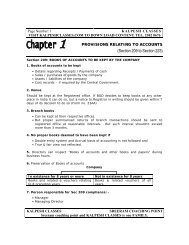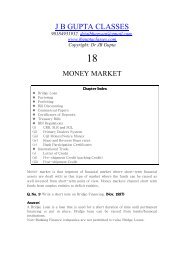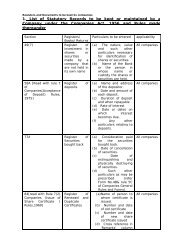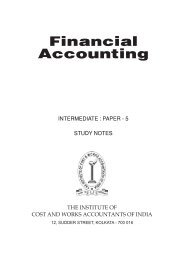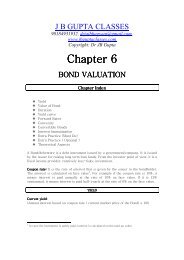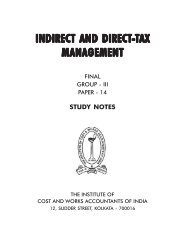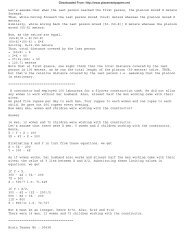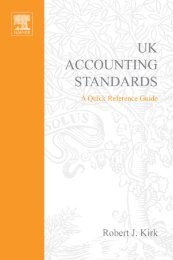Valuation for Financial Reporting - CMA Ankur Pandey
Valuation for Financial Reporting - CMA Ankur Pandey
Valuation for Financial Reporting - CMA Ankur Pandey
- No tags were found...
Create successful ePaper yourself
Turn your PDF publications into a flip-book with our unique Google optimized e-Paper software.
14 <strong>Valuation</strong> <strong>for</strong> <strong>Financial</strong> <strong>Reporting</strong>ACADEMIC RESEARCH ON THE RELEVANCEOF FAIR VALUE ACCOUNTINGDuring the 1980s and 1990s, researchers conducted numerous empirical studies onthe relevance of fair value accounting. The timing coincided with the public debate onthe appropriate accounting standard <strong>for</strong> financial instruments. The FASB had addedthis topic to its agenda in 1986, and the subject later became controversial. <strong>Financial</strong>institutions opposed a change requiring them to account <strong>for</strong> their financial assets atfair value. Alternatively, banking regulators and others claimed the accountingstandard <strong>for</strong> financial instruments at the time did not provide users with relevantin<strong>for</strong>mation, and changes to the standards were necessary. Proponents of fair valueaccounting argued that assets, liabilities, and earnings based on fair values, rather thanon historical costs, provided more relevant in<strong>for</strong>mation to users. Former SECChairman Richard Breeden testified in 1990 be<strong>for</strong>e the U.S. Senate’s Committeeon Banking, Housing, and Urban Affairs, saying he believed that market-based data isthe most relevant financial in<strong>for</strong>mation. He also advocated a move to fair valueaccounting <strong>for</strong> all public companies and financial institutions. (The debate on fairvalue accounting continues even today.)In 1990 and 1991, the FASB issued two accounting standards that focused onin<strong>for</strong>mation disclosures of financial instruments: SFAS No. 105, Disclosure ofIn<strong>for</strong>mation about <strong>Financial</strong> Instruments with Off-Balance-Sheet Risk and <strong>Financial</strong>Instruments with Concentrations of Credit Risk, and SFAS No. 107, Disclosuresabout Fair Value of <strong>Financial</strong> Instruments. In 1993, the FASB issued SFAS No. 115,Accounting <strong>for</strong> Certain Investments in Debt and Equity Securities, which changedhow firms accounted <strong>for</strong> and reported on securities they held <strong>for</strong> investment. Thefirms most affected by these accounting standards were financial institutions such asbanks and thrifts. SFAS No. 115 required firms to measure the fair values of financialinstruments that were to be traded or available <strong>for</strong> sale. The standard made somechanges to debt securities but did not address all of the financial reporting issues.Under SFAS No. 115, banks and thrift institutions report the fair values of thesefinancial instruments on their balance sheets and gains or losses from the change infair values in their income statements.<strong>Financial</strong> disclosures required by banking regulators and accounting standardsetters provided academic researchers with rich data <strong>for</strong> empirical studies on therelevance of fair value accounting to investors. The research primarily explored twoareas. First, researchers examined the association between the stock prices of financialinstitutions and the net assets of those firms when their financial instruments weremeasured at fair value. Second, studies tested the relation between investors’ gainsand losses from owning bank stocks and the banks’ own profits and losses using thesecurities’ fair values.Research using bank and thrift data revealed that accounting <strong>for</strong> financial instrumentsat their fair values rather than historical costs improves the relevancy offinancial reporting. Selected research on the relevancy of fair value accounting isdescribed as follows.



